Given that we know the universe is infinite, it should come as no surprise that the things we’ve found beyond our planet tend to be a bit bizarre. But the really surprising thing is that every time scientists think they’ve figured something out, they discover something new–and in some cases, more than a little troubling–that disrupts the theories they spent so long developing and proving.
It may come as a surprise, considering how intensely we look out onto the stars, that even in our own backyard there are things scientists just don’t understand.
10. Why and How is Space So Noisy?
“In space no one can hear you scream,” goes the famous tagline to one of the all-time hits of science fiction horror, Alien. However, scientists have discovered that contrary to the commonly-held belief, space is incredibly noisy. The problem is that they’re not sure why.
Especially concerning is what scientists have referred to as “space roar,” comprised of odd, extremely loud radio signals bouncing around all over the place, along with some other signals that scientists just can’t explain. The discovery came in 2006, when a NASA balloon mission with the intention of catching faint radio waves indicating stars formed early in the history of the universe instead caught a loud blast of noise. Theories for what is causing the constant noise include a lot of options from the very radiation the mission was trying to detect to gas swirls and even the noise of galaxies themselves, but so far none of those theories adds up.
9. The Great Attractor
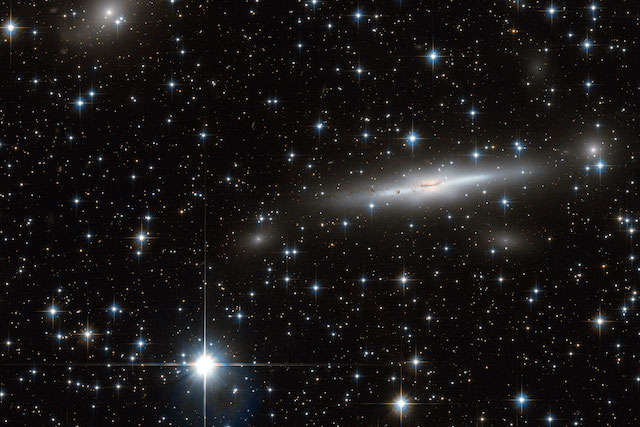
Some 220 million light years away, something is pulling our galaxy towards itself. What is it? Scientists don’t really know–because they haven’t been able to actually see the object–or objects–causing the reaction. The Great Attractor is what the gravitational anomaly has been called, and most of our knowledge of it is indirect, including the theories about why we don’t know more.
The Great Attractor was first discovered in the 1970s, in the sector of the sky that scientists have named “the Zone of Avoidance.” For decades, scientists avoided looking there because–being in the same direction as the center of our galaxy–it’s full of gas and dust and other debris, making it harder for earlier-generation instruments to pick out anything in particular among the noise. But that discovery showed us that the Milky Way galaxy, along with several others in our local group, are definitely being pulled towards something. More recent astronomical technology has allowed us to look more closely into the Zone of Avoidance, enough to see a large supercluster of galaxies near The Great Attractor called the Norma Cluster. However, even as big as the Norma Cluster is, scientists have already ruled it out as a candidate for The Great Attractor. Fortunately, scientists are fairly certain that this particular anomaly isn’t going to destroy our galaxy any time soon, considering the much more immediate and closer-to-home threats that are out there.
8. Giant Voids
https://www.youtube.com/watch?v=SPtSBLpyBu4
How can there be a void within a void? Space is generally considered the ultimate void: after all, normal matter only makes up between 1 and 10% of the known universe, so automatically, the rest should be void. But it turns out that some parts of space are just a little too empty, a little too underpopulated. Voids come in varying sizes, and generally are discovered via “cold spots” in the map of cosmic microwave background (CMB) charted by astronomers across the known universe. Little pockets of nothing are not that strange, but big pockets of the known universe where there are few if any stars are another thing entirely.
The largest void theorized to exist is actually very close: the KBC void, also known as the local hole, is theorized to house the Milky Way galaxy, along with our local cluster. If the observations of the scientists it’s named after (Ryan Keenan, Amy Barger, and Lennox Cowie) are correct, our galaxy is in a hole that may be anywhere from 1 to 2 billion light-years across, situated a few hundred million lightyears away from the center. The Boötes void, discovered in the 1980s, is approximately 250 million lightyears across, seems to have only about 60 galaxies in it. For comparison, our own galaxy (which as noted before is in its own rather large hole) has over two dozen galactic neighbors.
Why are these patches of nothing important? For one thing: they challenge our existing ideas of the formation of the universe and just how old our universe is. Even the billions of years we know the universe hasn’t existed shouldn’t have been long enough for regular spreading to create giant holes of nothing. Which leads to the other reason: the voids could, some scientists theorize, be created by surges of dark energy. Ultimately, however, nobody knows why the universe seems to be dotted with these random, enormous holes with little to nothing visibly going on in them.
7. Saturn’s Moons
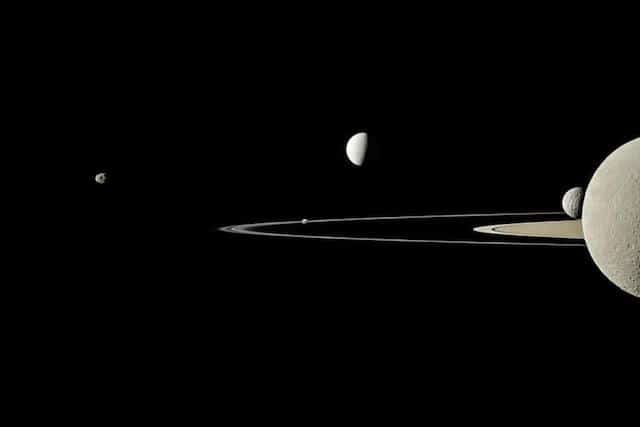
While the broader area of space beyond our backyard is full of mysteries, it’s a common assumption that we have a pretty good handle on what’s going on in our own solar system. Which makes it strange indeed that we recently discovered a brand-new moon circling Saturn.
“Peggy,” as the tiny, possibly disintegrating satellite is called, was discovered in 2013, when NASA’s Cassini snapped a picture of Saturn’s rings, and caught disturbances that suggested the formation of a new moon. The discovery did shed light on how Saturn has managed to acquire so many moons–62 confirmed, with 150 satellite objects of different sizes–but it also opened up more questions, including how stable the moons of Saturn truly are. Since Cassini went dark in 2017, there’s no real way of knowing if Peggy is even still present; JPL speculated that the diminutive moon was unlikely to get any bigger, and in fact was much likelier to disintegrate. It’ll be some time before another mission can make it to the ringed planet, in order to get close enough to confirm or deny.
6. Something is blocking us from seeing the light from a faraway star
A star approximately 1,500 light years away from us, unofficially named “Tabby’s Star” or KIC 8462852, is notable for having another, much less formal nickname: “WTF star.” In this instance, WTF stands for two different acronyms, the more polite one being “where’s the flux?” That’s because something–and to date, scientists aren’t sure what–is blocking us from seeing approximately 20% of the light from the star.
Theories on what could be blocking the light range wildly: Tabetha Boyajian, who the star is named for, speculated that it could be a Dyson Swarm, a theoretical megastructure proposed to be used by advanced civilizations to harvest energy output from a star. Of course, this explanation hasn’t sat well with anyone, and from the time Boyajian announced her findings of the star’s odd pattern of dimming in 2013, various scientists have sought to explain the variability and dimness, with the most recent papers published in 2019. However, to date, nothing has fully explained why the star is being blocked.
5. New Black Hole Discoveries Continue to Prove We Don’t Know Black Holes That Well
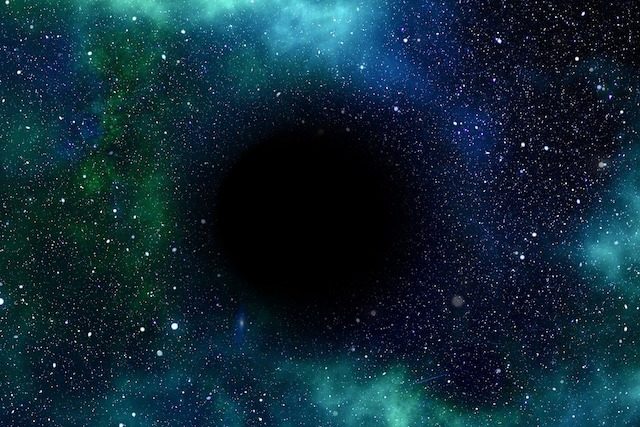
Now that scientists have captured the first image of a black hole, the odd phenomenon seems almost mundane in comparison to how scientists and laypeople alike used to consider them: just another stage of stellar evolution, and what happens to very large stars when they burn out. However, just as scientists have begun thinking that they understand the fundamentals of the phenomenon, they’ve encountered another curve ball: some of the supermassive black holes they’ve discovered are just too big and too young to exist, given our understanding of the age of the universe and how the structures form.
In 2017, scientists discovered one of the biggest, most distant supermassive black holes to exist: the object formed when the universe was only 5% of its current age, something that shouldn’t have been able to happen in the first place. Add to that the sheer mass of the object, and scientists are even more puzzled. There simply isn’t enough time, according to what scientists know about the age of the universe, for an object that large to happen. More recently, Chinese scientists found another monster of a supermassive black hole closer to home: 13,800 lightyears away from Earth, it’s 68 times heavier than our sun, which just shouldn’t be possible. The discoveries just prove that the moment scientists are certain they understand the mechanics of the mysteries of space, something is certain to come along and throw another wrench into the theories.
4. How Many Planets are Actually in Our Solar System?
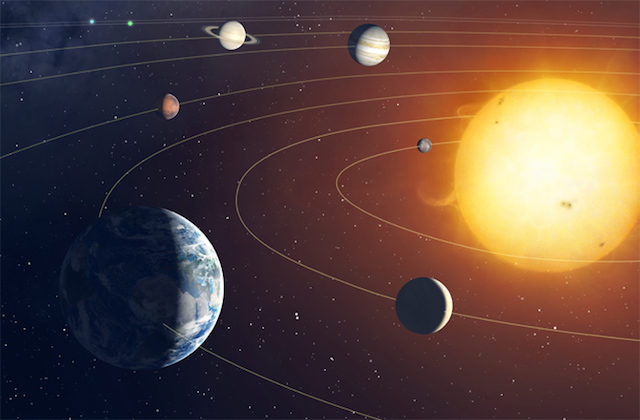
Everyone learns that there are eight (or, prior to 2006, nine) planets in our solar system; there are even multiple mnemonic devices for remembering the names in the right order. But more recently, models following the movement of objects in our solar system have indicated that that fundamental understanding might be entirely wrong.
In 2005, astronomer Mike Brown of Caltech discovered an object larger than Pluto in the Kuiper Belt, which itself triggered a scientific revolution: since there were objects larger than Pluto beyond its orbit, the then-ninth planet was demoted to “dwarf-planet” status by the International Astronomical Union. Fast forward to 2016, and Brown came back with solid evidence of another planet beyond Pluto, this one the size of Neptune. The difficulty comes in, however, with just how far away the massive planet is: so distant that we effectively can’t see it. In fact, the way Brown and his colleagues discovered the planet is only through looking at models for the orbits of existing planets and known bodies in our solar system. As scientists look into how to prove or disprove the planet’s existence, a bigger question continues to loom: just how big is our solar system, and are there even more planet-sized objects, even further out, that we just can’t see?
3. How Do Solar Systems Develop and Evolve?
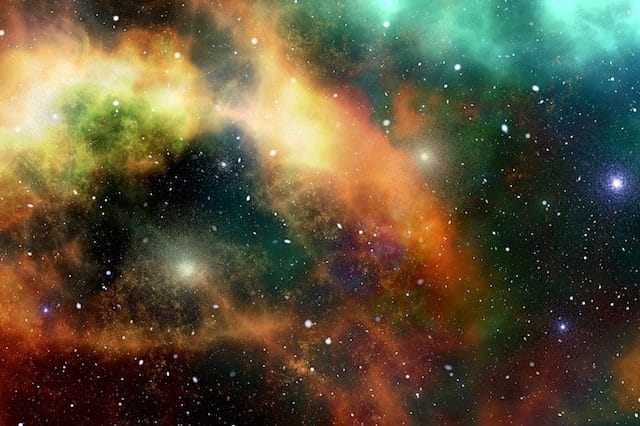
For decades, the development of our solar system was settled science: rocky planets like Mercury, Venus, Earth, and Mars formed early on, since the harder materials that made them up could withstand the intense heat closer to the sun. Over time, gas giants like Saturn, Jupiter, and Uranus came about from lighter materials–ice, liquids, gas–that came together in the colder region further away from the sun. But once again, more recent observations from outside of our solar system have brought that into question: gas giant planets called “hot Jupiters” and “hot Neptunes” that are much, much closer to their star open up the question of whether they formed closer to their sun, or if they migrated there over time.
As scientists seek out exoplanets–that is, planets circling stars outside of our solar system–the generally accepted theory of how our own celestial neighborhood formed has met bigger challenges. Hot Jupiters and hot Neptunes are gas giant planets that orbit close to their stars, in a few instances as close as 1 AU (that’s the same distance between the Earth and the Sun). What scientists can’t agree on is whether the gas giants actually formed so close to the star they’re orbiting, or whether they’ve been drawn closer and closer over time. The answer to that question–if it can ever be determined–could tell us a lot about how our own solar system formed and its ultimate fate: did the giants in our system spread out over time, or will they be pulled in like a death spiral?
2. How Did the Universe’s “Dark Age” End?
Space is mostly dark–that’s the accepted understanding, and it’s not exactly wrong from an observational perspective. So it may be surprising to know that there was an era in the universe when it was even darker: a period starting about 300,000 years after the Big Bang and ending approximately 500 million years after the beginning of the universe when gases were so dense that light wasn’t able to penetrate or travel. In short, the universe was as dark as it is possible to be, everywhere. And then, seemingly just as suddenly, that ceased to be the case: all at once, the universe reionized, and slowly gases began to pull together into structures that we can recognize now. But why and how?
Scientists don’t know. Observations of cosmic microwave background and the areas where we’re able to see the earliest formation of the universe tell us that it did happen–in fact, we wouldn’t exist if it hadn’t–but because those areas are still dense with gases, it’s nearly impossible to observe in such a way to get answers. Scientists are so perplexed, in fact, that theories on it are fairly thin on the ground: cosmologists and astronomers and theoretical physicists alike are still bent on trying to find something to observe from which to start forming theories. All we know at this point is that approximately 500 million years after the Big Bang, something metaphorically gave the opaque and neutral universe a shake, and the gases and dusts began to settle into specific structures that would lead to stars, planets, galaxies, clusters, and everything else we’ve been able to identify.
1. What Came Before the Big Bang?
After a great deal of controversy, astronomers and physicists discovered fundamental evidence of the “Big Bang,” the event that began the universe as we know it. The question still plaguing scientists, though, is: what was the universe like before the Big Bang? Clearly, if something could explode, something was there–but what was it, and how did it behave, and how did it create such an enormous explosion that the known universe still feels the effects billions of years later?
Scientists used to think that the universe was timeless: it always existed, it would continue to exist into infinity. But the evidence of physics and cosmology alike points conclusively to a set beginning point. As things stand right now, we know what happened starting one second after the Big Bang, when the universe cooled off sufficiently for subatomic particles like protons and neutrons to stick together. But we have no way currently to know how the Big Bang itself happened–which means that there’s no way to say what the universe looked like before it. The most commonly-accepted theories revolve around a superdense, ultra-hot collection of material, but scientists in favor of that theory can’t agree whether it was an infinite stretch, or infinitely tiny. Other theories include the possibility that the Big Bang wasn’t a one-time event, but instead a recurring one–though of course, on such a massive scale that life as we know it will long since be extinct before it recurs. Some theories even suggest that prior to the Big Bang, there was fundamentally nothing at all: that the entire universe of matter exploded into existence out of a void. It’s more likely that we’ll never know than that we’ll ever find out, and the late Stephen Hawking suggested that the answer isn’t even important: since “before the Big Bang” is essentially before time, whatever was present can’t be observed, and is ultimately irrelevant. But that fact doesn’t stop people from wondering.